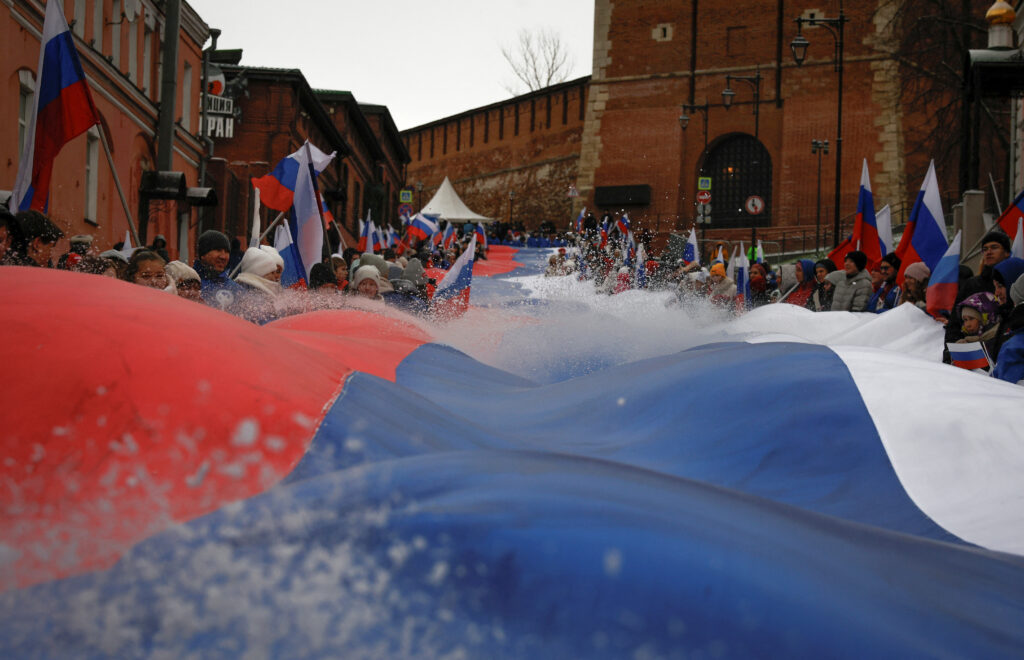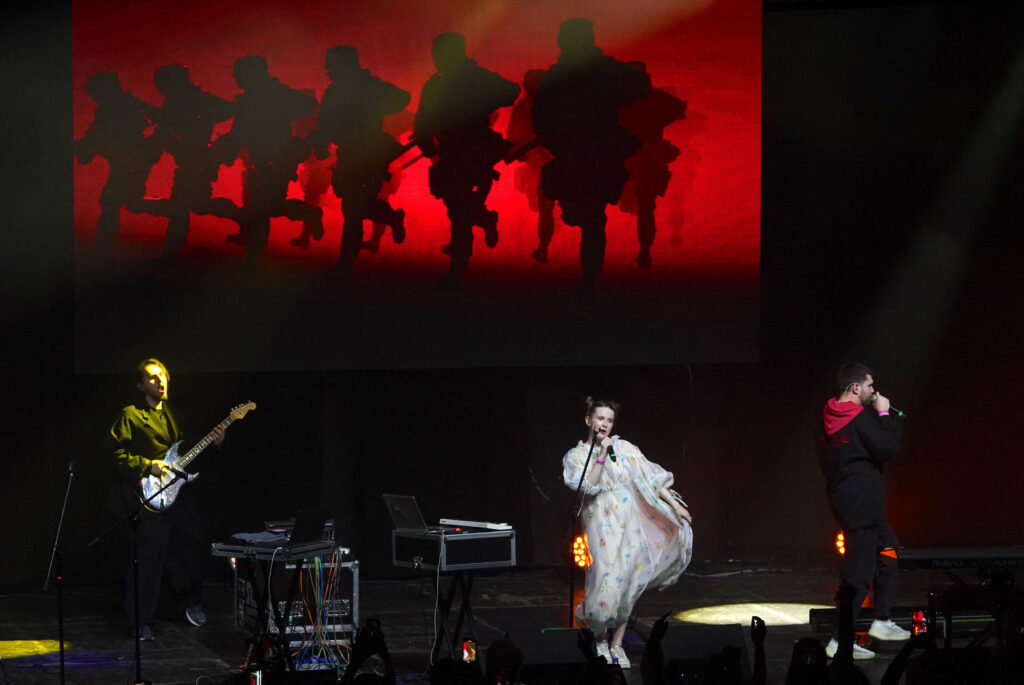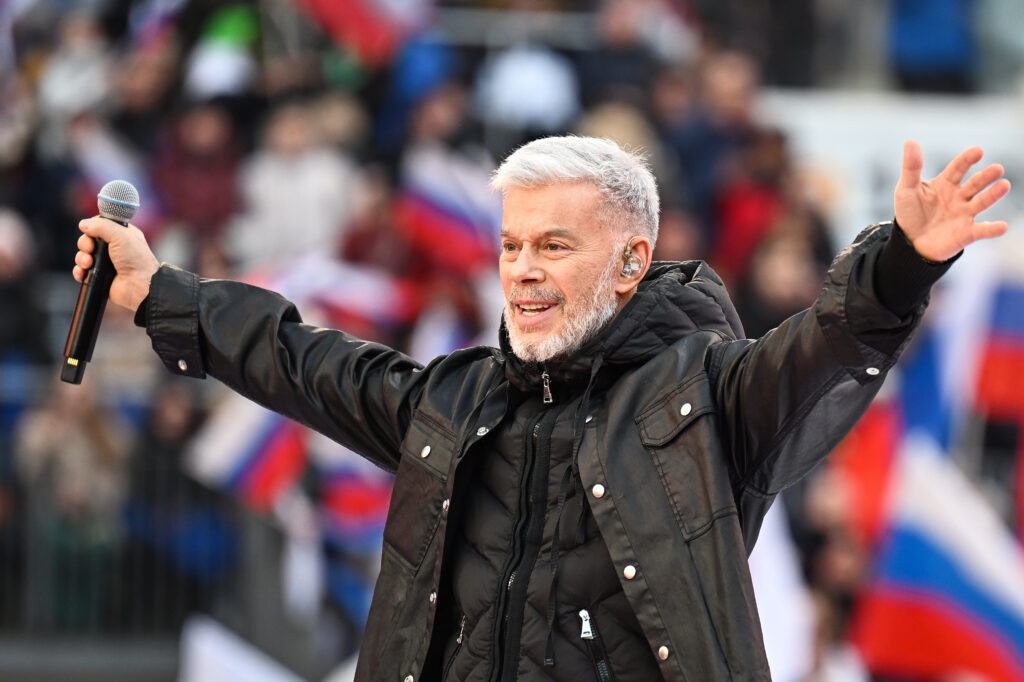The image of the 1990s as the antithesis of the contemporary Russian regime was formed by the mid‑1990s. It was then that the expression ‘freewheeling 1990s’ emerged within Vladislav Surkov’s ‘sovereign democracy’ project, and the first post-Soviet decade began to be constructed as a social and cultural trauma, and is steadily described in official documents as a world of chaos, economic disaster and national humiliation. In this article, I address the cultural recycling of the 1990s in popular culture and propose that the phenomenon of the ‘returning 1990s’ be considered within the framework of the metamodernist paradigm.
The 1990s and the politics of memory
In recent years, given the increasing control by the government structures, we can observe processes similar to those occurring in the late Soviet period, namely the creation of alternative autonomous zones of cultural production. The phenomenon of the ‘Soviet heritage’ being recycled in contemporary Russia includes not only a return to Soviet models in state-level policy and revanchist foreign policy projects, but also the reproduction of cultural practices characteristic of the underground, the unofficial or so-called ‘grey’ zone in the Soviet culture.
One of the main vectors of the new counterculture is the construction of an image of the recent past. An alternative reading of the period between Gorbachev and Putin in Russian history, not as a national trauma but as a reservoir of unrealised future scenarios, becomes a form of non-violent resistance to official politics of memory. If the ‘victory’ over the 1990s, along with the memory of victory in the Great Patriotic War (as Russians call World War II), is now the founding myth of the current regime, other interpretations of that period, even if they hint at some of its positive aspects, inevitably become an act of resistance.
Alternative interpretations of the 1990s began to appear already at the end of the 2000s. Gosha Rubchinskiy’s avant-garde fashion projects began to set the style. His first collection, ‘The Evil Empire’, launched in 2008, presented the image of the Russian gopnik (chav) as a new cultural hero and launched a global subculture. With Rubchinskiy, clothes from flea markets and street markets in the 1990s, the style of skaters and rave subcultures became the new arte povera (‘poor art’), a sensible alternative to the glamour culture of the ‘fat noughties’. The second half of the 2010s saw the arrival of TV series presenting a nostalgic image of the 1990s, such as ‘Chelnochnitsy’ [Suitcase Traders] (2016−2018), ’90-ye. Veselo i gromko’ [1990s. Jolly and Loud] (2018), or ‘Mir! Druzhba! Zhvachka!’ [Peace! Friendship! Bubble Gum!] (2020−2021). By the early 2020s, the era of rap music in Russia, which dominated throughout the 2010s, came to an end, giving way to the renaissance of electronic dance pop.
Neo rave and metamodernism
The phenomenon of the neo rave became an important cultural phenomenon and an example of rethinking and re-evaluating the 1990s. While in the 1990s rave was a symbol of Russia’s and Eastern Europe’s liberation from the Soviet regime, a break from everyday life, an antidote for young people who suddenly found themselves in a situation of total discursive chaos, today the demonstrative reference to the 1990s becomes a political statement, a form of protest against the return to the situation of the Cold War and a new Iron Curtain. Neo rave offers its own ‘Russian project’, different from both Putin’s conservative project and the liberal project.
As theorists of metamodernism point out, one peculiar feature of the coming era of metamodernism is a shift towards emotionality, affect, performativity and corporeality, combined with a simultaneous reduction in individualism and rational thinking. In her book ‘Metamodernism in Music and Around It’ (2020), Nastasia Khrushcheva links the blooming of rave culture to this new sensibility and emphasises that rave overcomes alienation and dissolves individual consciousness into a ‘people’s body’ united by music and movement.
Another important characteristic of metamodernism is the coexistence of various ideological positions that seek neither conflict nor synthesis. The 1990s—as a time that has diametrically opposing perceptions in society and culture—are well suited to metamodernist ‘rocking’, simultaneous acceptance and rejection. The new rave culture resembles the Soviet experience of collectivity as well as the hallucinogenic generality of the 1990s. Within the neo rave, one can see an emergent new non‑linear frame of reference and a new unifying metanarrative, offering a stylistic and existential alternative.
GSPD and Dead Blonde: Remembering what you never knew
Let us consider this metamodernist alternative on the example of two related rave projects: GSPD and Dead Blonde. GSPD is the project of David Deymour (b. 1993 in Nizhny Tagil) and his wife Arina Bulanova (b. 1999 in Arkhangelsk), who is the female voice in GSPD tracks. David Deymour previously performed as ‘MS Gospod’ [MS Lord], hence the current name of the project: ГСПД/GSPD. GSPD’s first release was in 2016, and the 2018 album called ‘Rave Epidemic’ was the beginning of the rave renaissance in Russia. In January 2021, a collection of tracks entitled ‘Leningradsky Elektroklub‘ [Leningrad Electroclub] was released.
The album’s title invokes the legendary raves of the 1990s, which originated in Leningrad/Petersburg. The emotionality and corporeality in GSPD’s music tracks and videos are offered as a cure against the atomisation and apathy of perpetual screen scrolling, as a unifying performative experience. Russia is about a movement of young bodies, and rave is about eliminating fragmentation and alienation. In the video called ‘Tantsui ubivaj [Dance Kill]’ (2.4 million views at the time when this article was written), young barbarians in Adidas suits and their sexy girlfriends are giving new life to languid intellectuals reading Kafka, they sweep rosé and weathered sushi from tables, replacing them with vodka and pelmeni, and a bronze bust of Putin is replaced with a worn portrait of a smiling Yeltsin.
Dead Blonde is another project by Arina Bulanova and David Deymour, created in 2020. The project proved to be very successful and the track ‘Malchik na devyatke’ [Boy on VAZ-2109 Samara automobile] (2020, the ‘Propaganda’ album) has so far gathered more than 18 million views on YouTube (the audio version has more than 30 million). The summer of 2021 saw the release of Dead Blonde’s second album ‘Knyazhna iz khrushevki’ [Princess from Khrushchev-era house], which cemented Arina Bulanova’s status as a rave princess. The album cover features all the attributes of early wealth accumulation in the post-Soviet era: checkered bags used by suitcase traders, bouffant hairdo and excessive trash glamour style in her clothes.
The listener will not find any exact musical quotes or references in Dead Blonde or GSPD tracks. They will always resemble something familiar, but there will be no direct quotations. What we are dealing with is not intertextuality, but the desire to find and encapsulate an archetype that combines the most characteristic features of the era. What is characteristic of metamodernism is not citation, but appropriation. It is a recycling of the ruins of meanings, and the aim is not to return to these meanings (in a neo-modernist or post-modernist style), but only to immerse oneself in them for a while, to delve into them and stay there. The life-affirming drive in the GSPD and Dead Blonde projects is intertwined with melancholy, and the understanding that it is all about ghosts and the rustle of a world that is gone forever.
Contemporary cultural recycling actively borrows visual and musical material not so much from the realities of the 1990s, but from the cinematography of that period. A well-known example in this context is Monetochka’s track ‘90′ (2018) and the music video for this song, based on iconic images from Alexei Balabanov’s film ‘Brat’ [Brother] (1999).
In the ‘Malchik na devyatke‘ video, scenes from ‘Brat’ are subjected to ironic subversion, while in the ‘Sasha Bely’ track, Dead Blonde talks about her love for the bandit from the cult TV series ‘Brigada’ [Brigade] (2002), played by Sergey Bezrukov, and she dreams of becoming a killer’s wife. By working with the encapsulated affect of violence, the audience can get out of the trap of the trauma discourse and, instead of denying or condemning, they can accept and play around with all the scary and dark things that are associated with the 1990s in cultural memory: chaos, drugs, poverty, lawlessness and fragility of youth.
The song ‘Akh, Rossiya-Matushka!’ [Ah, Mother Russia!] from the album ‘Knyazhna iz khrushevki’ musically and meaningfully refers us to Kombinatsiya’s 1990 hit ‘American Boy’ (‘Ya prostaya russkaya devchonka’ [I’m a Simple Russian Girl]). However, in this track, Dead Blonde, looping the whole post-Soviet history of Russia, offers an alternative soundtrack for the coming era (post-post-Soviet era): unlike the heroine of the perestroika anthem, today’s ‘Russian girl’ no longer needs a foreign prince, she chooses Russia:
‘Under your protection my sleep is sound at night.
And I’ll endure what I see during the day (Ooh!)
And I won’t marry a foreigner
Oh, Mother Russia, I love you (Oy)’
This track is an example of metamodernist ‘rocking’: we are not very clear what this statement actually represents: sincere patriotism or a subversive critique of a closed authoritarian state.
Aesthetic populism and the imitative commonality of the metamodern
What gets aestheticised in the new Russian arte povera (‘poor art’) are the mass things, trashy, insignificant and previously rejected, such as khrushchevka houses, bad music, all kinds of kitsch, dubious political ideas. This aesthetic populism, i.e. the common, the banal, the unprofessional and the non-new, is at the heart of metamodernist culture. Recycling is primarily applied to cultural phenomena that can unite people from different social segments in a single emotion in order to create an imitative commonality.
What serves as a significant musical reference point for GSPD and Dead Blonde is the work of Sergey Zhukov and the band ‘Ruki Vverh!’ [Hands Up!]. Their hit ‘Kroshka moya’ [My little one] became the anthem of the late 1990s. In 2020, the renaissance of easy pop music was dubbed ‘Zhukov-style pop’. In July 2022, Ruki Vverh! set a record, attracting 72,000 people to their concert at Moscow’s Luzhniki stadium and more than 50,000 at St. Petersburg’s Gazprom Arena.
Music critic Nikolai Redkin describes the mechanism of cultural recycling: «The Zhukov pop fad originated in the underground. There is a theory that when underground musicians run out of ideas, they go looking for inspiration in the most unobvious places. And the genres that are best suited for this are those that have been written off, utterly unfashionable and hackneyed. Zhukov pop was also like that, and artists picked it up, kind of, ironically, but then it turned out that it was more about real love than irony.»
In the era of metamodernity, it is not surprising that people turn to the songs of Ruki Vverh!, since the new cultural paradigm is interested in phenomena that have maximally absorbed the spirit of a specific time and turned into new folklore. Metamodernist culture is based on a simplification of the cultural field, reducing individual diversity to supra-individual formulas and types, coming close to medieval culture and folklore, where the ritual function of art prevailed. That is exactly why contemporary Russian propaganda is actively leveraging the images of the once countercultural Tsoi, Letov and Bodrov, who have now become mythological. The nostalgic potential of the 1990s is beginning to attract the attention of the state authorities as an instrument of affective mobilisation, leading to attempts to appropriate this resource.
Photo: Monetochka, 90
This article was written as part of the research project entitled ‘No (w)stalgia of Modernity: Neo-Soviet Myth in Contemporary Russian Culture and Politics’, based on a grant from the Swedish Research Council, Project No. 2020−02479.










